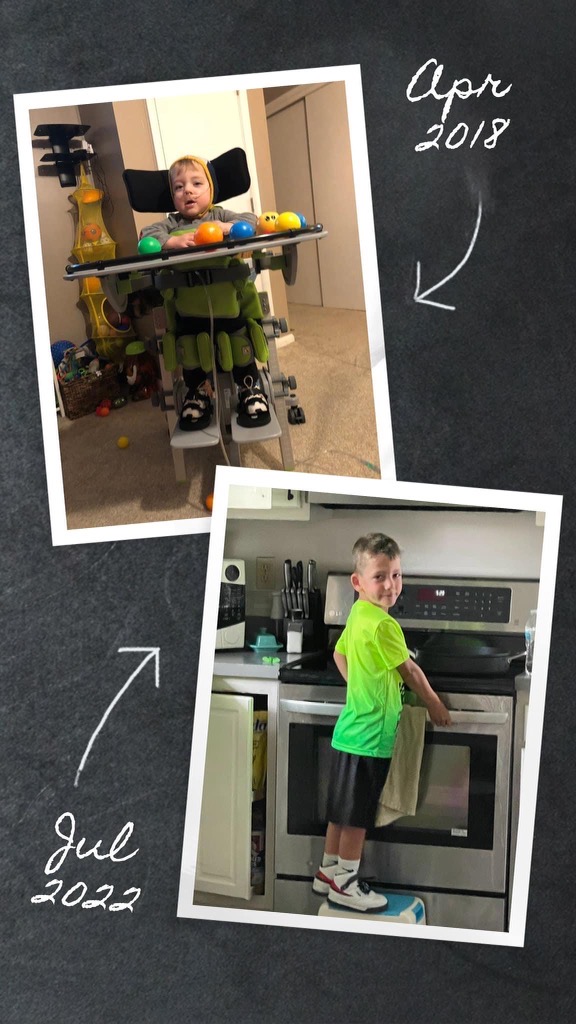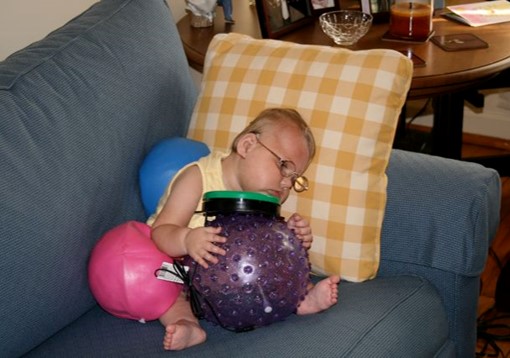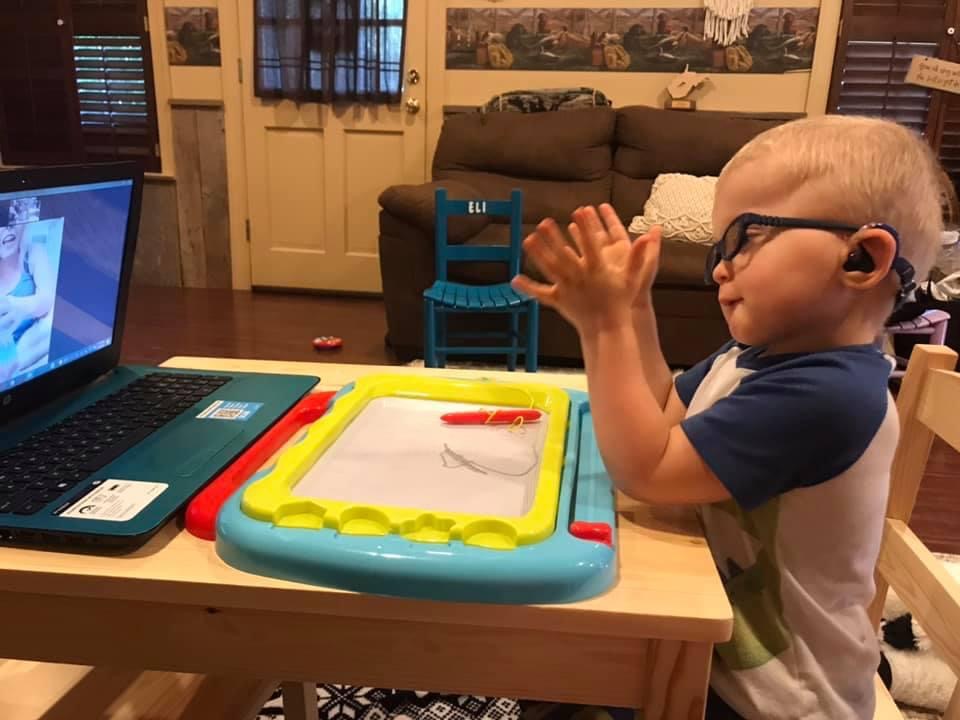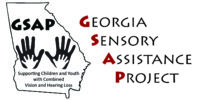Introduction to the Communication Matrix
The Communication Matrix is an assessment tool created to help professionals and family members support individuals with complex communication needs. The Matrix evaluates expressive communication skills typically developed between 0-24 months of age. It is appropriate for individuals of any age who do not use some form of language fluently. They may have varying types and degrees of disabilities, including severe sensory, motor and cognitive impairments. The Matrix considers any type of communication including pre-symbolic, manual, braille, AAC and more. (Note: The paper version is a free download and the use of the intervention modules is free; however, there is a nominal fee to administer more than five of the on-line versions of the CM.)
Holli Decker, a speech-language pathologist, provides her personal experience with the Communication Matrix and the West Virginia Intervention Modules as tools for determining goals and providing therapy for her students with complex communication needs in a short video.
Comments From Parents That Have Experienced The Benefits Of The Communication Matrix
Beau
“As overwhelmed parents of a newly diagnosed deaf plus child, we didn’t understand how to navigate much of what we had just been handed. Not knowing anyone with hearing loss, and with no background in communication issues or training, we had no clue where to start. The Communication Matrix provided sensible information with logical ways to help our child that just made sense to us and were easy to implement. Our little boy has excelled more than we even envisioned.”


Maryn
“The Matrix was such a simple tool we used to learn about Maryn’s communication and how to help her reach the world. The Matrix helped us learn how to understand language in ways which enabled us to reach Maryn where she was on that journey. It was so enlightening and educational as to what, when and how to support her.
Maryn is now 15. Her first Matrix was done when she was about four. I wish we had known about it even earlier. It was our amazing deaf-blind specialist that introduced us to it. Because of that education, we went from knowing nothing and Maryn having no words to her using a dynamic communication device. You just never know unless you have the tools to explore and support. And we have video to document her journey.”
Eli
“The Communication Matrix helped me get creative in methods to communication with my son and in a way that is more interesting to him. The Communication Matrix helped me understand more ways to engage in communication with my son, especially with his sensory deficits.”

How do I administer the Communication Matrix?
Navigating the Communication Matrix
The Communication Matrix Intervention Modules are organized so that the three-part “Communication Matrix Life After the Assessment: The Foundation for Intervention” is viewed first. The “Essential Strategies” should be viewed next, followed by viewing the videos for the one or two levels where the individual is functioning as identified on the Communication Matrix
Communication Matrix Modules:
Intervention Planning Tools
American Speech-Language-Hearing Association. (1982). Language [Relevant Paper]. Available from www.asha.org/policy.
Beukelman, D. & Mirenda, P. (2013). Augmentative and alternative communication: Supporting children & adults with complex communication needs 4th Edition. Baltimore: Paul H. Brookes Publishing.
Binger, C., Kent-Walsh, J., Harrington, N., and Hollerbach, Q.C. (2020) Tracking early sentence-building progress in graphic symbol communication Language, Speech, and Hearing Services in Schools. 51, 317-328.
Brady, N. C., Bruce, S., Goldman, A., Erickson, K., Mineo, B., Ogletree, B. T., Paul, D., Romski, M., Sevcik, R., Siegel, E., Schoonover, J., Snell, M., Sylvester, L., & Wilkinson, K. (2016). Communication services and supports for individuals with severe disabilities: Guidance for assessment and intervention. American Journal on Intellectual and Developmental Disabilities, 121(2), 121–138.
Dowden, P.A. (1999). Augmentative & alternative communication for children with motor speech disorders. In Caruso, A., and Strand, E. A. Eds.) Clinical Management of Motor Speech Disorders of Children. New York: Thieme Publishing Co.
Giangreco, Michael & Ruelle, Kevin (2002), Ants in the Pants, Sage Publications.
Laubscher, E. & Light, J (2020): Core vocabulary lists for young children and considerations for early language development: a narrative review, Augmentative and Alternative Communication, DOI: 10.1080/07434618.2020.1737964
Lynch, Y., McCleary, M., et al. (2018), Instructional strategies used in direct AAC interventions with children to support graphic symbol learning: A systematic review child language teaching & therapy, 34(1), 23-36.
Pistorius, M. (2013). Ghost boy: The miraculous escape of a misdiagnosed boy trapped inside his own body. Nashville, TN: Nelson Books.
Stafford, A. (2005). Choice making: A strategy for students with severe disabilities. Council for Exceptional Children. https://journals.sagepub.com/doi/10.1177/004005990503700602
All Children Can Read
Literacy for Children with Combined Vision and Hearing Loss (nationaldb.org)
Communication Matrix Foundation
OHOA Modules
OHOA Module: Availability for Learning
Pennsylvania Training and Technical Assistance Center
Presentations
By Susan M. Bashninski, Missouri Western State University
Project SALUTE
https://www.nationaldb.org/info-center/project-salute/
Information Sheets
https://www.nationaldb.org/info-center/project-salute/#brief-information-sheets
- Object Cue
- Touch Cue
Project SPARKLE, 2006: Ski-Hi Institute, Utah State University
https://intervener.org/deafblindness/concept-development/
SKI-HI
https://ski-hi.mystrikingly.com
Texas School for the Blind and Visually Impaired
Types of Calendar Systems, University of South Dakota
Washington Sensory Disability Services
https://www.wsdsonline.org/forms/
Georgia Sensory Assistance Project
 Special thanks to Martha Veto and Heather Boyle from the Georgia Sensory Assistance Project (GSAP) for collaborating with the West Virginia Team on the resources for these modules. GSAP is a discretionary federal grant-funded through the US Department of Education, Office of Special Education Programs to increase the capacity of education teams and families to educate children who are deaf-blind. GSAP provides consultation, training, and resources for educators, service providers, and families of children and youth with combined vision and hearing loss, from birth through 21 years of age, across the state of Georgia.
Special thanks to Martha Veto and Heather Boyle from the Georgia Sensory Assistance Project (GSAP) for collaborating with the West Virginia Team on the resources for these modules. GSAP is a discretionary federal grant-funded through the US Department of Education, Office of Special Education Programs to increase the capacity of education teams and families to educate children who are deaf-blind. GSAP provides consultation, training, and resources for educators, service providers, and families of children and youth with combined vision and hearing loss, from birth through 21 years of age, across the state of Georgia.
